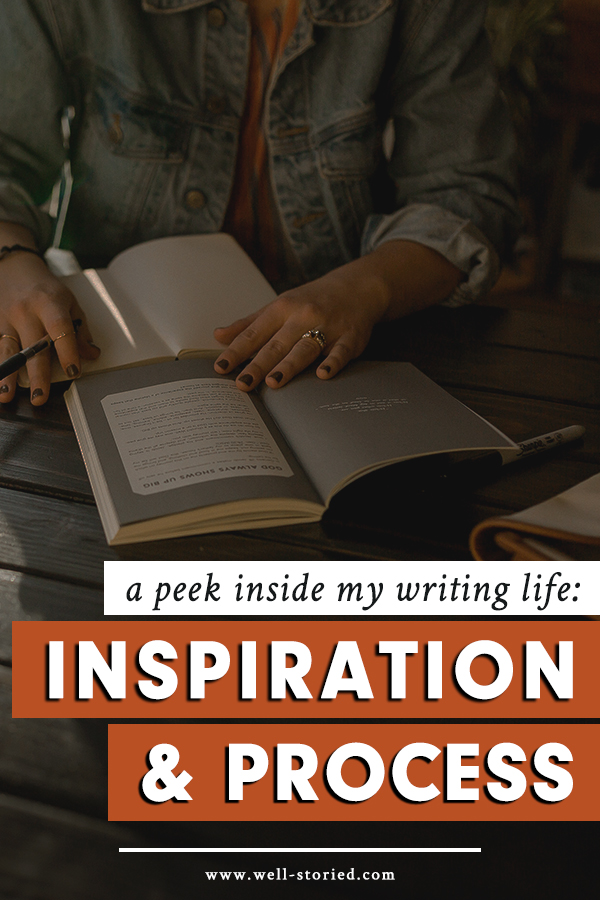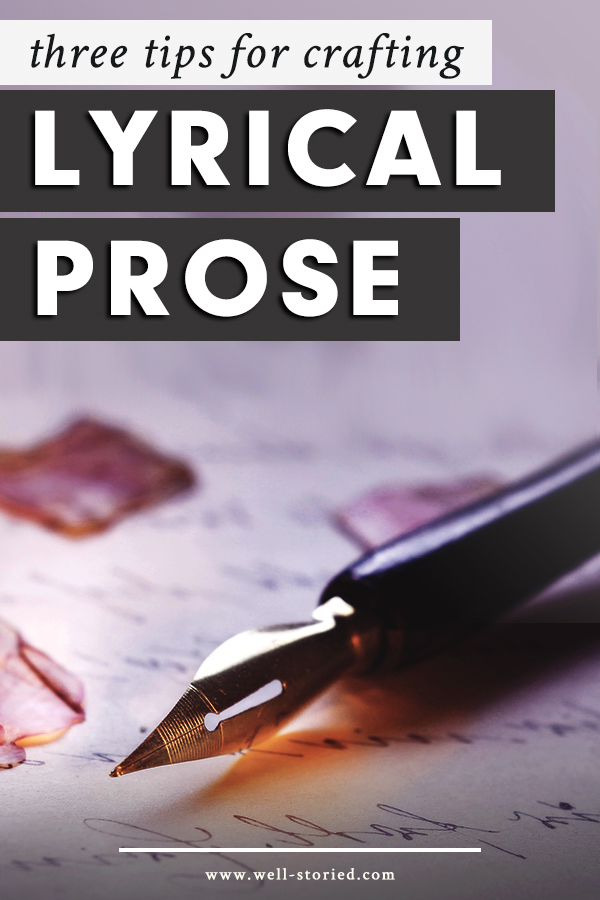Blog
Three Lessons Learned From a ‘First Three Chapters’ Critique
The opening chapters of your story are doubtless some of the most important you’ll write.
When crafted with care, a strong opening sequence effectively hooks readers into your story, encouraging them to keep turning pages to learn more about your characters, plot, and story world. A poor opening sequence, on the other hand, can lead readers to toss your book aside in boredom or frustration before your story ever gets off the ground.
Knowing the vital importance of a strong opening sequence, I jumped at the opportunity to work with freelance editor Isobelle Lans when she offered me her ‘First Three Chapters’ service in exchange for an honest testimonial and review.
2019’s Best Black Friday Deals for Fiction Writers
Looking for a few new tools and resources to inspire your writing life? Look no further!
Though it isn’t yet Black Friday, companies and creators across the internet have already begun sharing fantastic deals on workbooks, e-courses, apps, and other tools designed specifically with writers in mind. Today, I’m excited to share with you my favorite Black Friday deals for fiction writers, including sales on our resources here at Well-Storied. Take a peek:
How to Craft Alluring Intimate Scenes
From tentative first kisses to explicit sex scenes, intimacy in fiction can exist in many forms.
Included in that range is the popular fade-to-black, in which an intimate scene ends before anything too explicit happens on the page, nevertheless implying the characters share certain intimacies “off-screen.” A vulnerable conversation between friends or lovers can prove quite intimate as well, though today we’re going to stick to physical intimacies and how we can write them.
Those awkward, cringe-worthy love scenes? Those are exactly what I’m going to show you how to avoid today, using techniques I’ve gleaned from Diana Gabaldon’s I Give You My Body.
Inspiration & Process: A Peek Inside My Writing Life
Happy Monday, writers!
A few weeks ago, a freelance editor named Isobelle Lans reached out to ask if I’d like to participate in an interview about my personal writing life. Here at Well-Storied, I share the tools and techniques that have helped me develop my craft (and that can help you do the same), but I don’t often talk about the actual novels in which I put these insights into practice.
This is what Isobelle wished to discuss — my novels, the story world in which I write, and how both my life experiences and my work at Well-Storied have shaped both of these things. If this is something you’re interested in, stay tuned. Below, I’m sharing a sneak peek of the interview with a link to view the full copy over on Isobelle’s site, Inspired Lines Editing.
What to Expect When Working With a Freelance Editor
In recent months, I’ve had the privilege of working with two freelance editors to prepare my upcoming book for writers, Build Your Best Writing Life, for publishing.
First, I worked with Sara Letourneau of Heart of the Story Editorial to complete a line edit, which helped ensure I was using the best possible language to convey each point in my book. I then worked with Sarah Kolb-Williams of KolbWilliams.com on a copy edit to further polish my writing. (I’ll also be working with Sarah later this month on a final proofread of the book.)
Before these occasions, I hadn’t worked with a professional editor in any capacity. Because I knew so little about the process, I was nervous to dive in. Still, I braved the experience because I knew that working with professional editors was essential if I wanted to prepare the best possible book to share with the world.
In the end, I couldn’t have asked for two better first experiences, which were in large part due to choosing the best freelance editors for me and my manuscript — but that’s not what we’re going to discuss today. (If you’re looking for tips on choosing a great editor, make sure to check out Sara Letourneau’s recent guest post on this subject).
Rather, today I’m going to help you have a fantastic first time working with a freelance editor by breaking down everything you need to know before getting started. If you’re feeling nervous or confused about the process, this is the blog post for you.
Why Publishing Won't Make You a "Real" Writer
I’m often asked when I plan to publish my first novel, or how my work on that novel is coming along, and I’m incredibly grateful to know there are readers out there eagerly awaiting my fiction debut. If you’re one such reader, thank you!
But on occasion, I’m asked a different question about my general lack of publishing experience: “What gives you the right to give writing advice when you aren’t even published? You’re not an author. Why should anyone trust you?”
This is by no means a common occurrence for me, but it does happen from time to time, usually once or twice a year. And every time I’m asked this question, I get to thinking about creative validation and what it really means to be a writer.
Resolving Common Story Issues With "Show, Don't Tell"
“Don’t tell me the moon is shining; show me the glint of light on broken glass.”
This quote, often attributed to Anton Chekhov, is frequently used as an example of the “Show, Don’t Tell” technique that can help writers craft descriptive sensory language.
The use of such language has grown popular in recent decades thanks to the rise of film and television, which has led readers to favor fiction they can visualize as clearly as a movie in their minds’ eye. I discussed this shift toward film-making principles (and away from fiction’s previously popular all-knowing narrator) in my first article on the “Show, Don’t Tell” technique.
But today, I want to explore “Show, Don’t Tell” in a new light…
How to Commission a Great Book Cover Design
Despite the saying, readers do indeed judge books by their covers.
A great book cover design catches readers’ eyes and gives them an immediate understanding of the book’s genre, intended audience, and tone — and in many cases, its overall quality as well. This information then helps readers decide whether clicking on the book’s listing is worth their time. If so, they’re all the more likely to purchase the book in question.
Can you see why a great cover design is essential to your book’s success on the market?
How to Craft Romantic Chemistry Between Characters
As both a reader and a writer, I am a big fan of romance.
I love the unique tension and allure that exists within a love story, the will-they-or-won’t-they mystery that leads to such great page-turning material. But that material can’t exist without strong romantic chemistry between the characters in question (as evidenced by many a lackluster rom-com, am I right?) And unfortunately, chemistry isn’t exactly easy to define or to craft.
Though I don’t write within the romance genre myself, romantic subplots are a staple in my personal brand of storytelling. So today, I’m going to share with you everything I’ve learned about crafting romantic chemistry readers can believe in.
Three Tips for Crafting Lyrical Prose
Have you ever read a sentence that leaves your jaw resting atop your chest? Something so perfect, so planned, so melodic that you can’t help but marvel at the sheer mastery of the writer’s genius?
These examples of seemingly elusive “perfect sentences” are more than likely rhythmic ones, and are intentionally written with poetic cadence, smoothly disguised under the guise of mere storytelling.
Although these sentences may feel like they have a sort of je ne sais quoi, there are specific strategies you can use to weave some rhythm into your own fiction storytelling.
Guest Post: How to Choose the Right Freelance Editor for Your Manuscript
Looking for freelance editors is easier than ever, thanks to social media and the Internet. But choosing the right one for your manuscript? That can be tougher than you’d think.
So much goes into the process of contacting editors and weighing your options regarding budget, timetable, and other factors. As both a writer and an editor, I understand how intimidating and complex this decision can be. It’s tempting to choose an editor who offers the most affordably package or is available to work on your manuscript right away. But what if her personality doesn’t mesh well with yours? Or if her emails give the impression that she’s willing to work with you but not that interested in your story?
In other words, don’t just hire any editor. Hire the right editor, the one that’s the best fit for your project. Here are six factors that can help you make this important decision.
Three Alternative Drafting Techniques for Fiction Writers
Finding your personal writing process is essential to building a writing life you love.
Without knowing which techniques help you create your best work, you’ll struggle to get your stories down on the page. But every writer’s process is unique. The methods that work well for one writer won’t necessarily work for you. That’s why it’s vital you discover your unique writing process, including the method that helps you craft your best first drafts.
Traditionally, writers outline their stories, then use that outline to guide them as they draft their idea in full. But what if this method doesn’t work well for you? Good news! Today, I’m sharing three alternative drafting techniques that might just revolutionize your writing process. Let’s break them down together.











